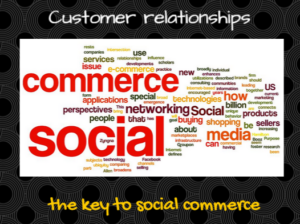Are you happy with your business growth hacking tactics? Or are you struggling to keep up with your competitors? You would be surprised how many of our clients say they are happy with their size and therefore don’t have a growth strategy. To exploit change as an opportunity, as Peter Drucker would say?
The entrepreneur always searches for change, responds to it, and exploits it as an opportunity.
Peter Drucker
In the life of a business, there are only two options … you can either keep up or surpass your competitors through a business growth strategy or lose market share.
Business growth obviously can be planned in various degrees. If your business is at the size you desire, a minimum or status quo strategy may be the best for you. In any case, you need to execute some form of a growth strategy to at least maintain the status quo.
Successful businesses grow. Through better products and processes, they win the favor of customers, increasing their volume and margins. That success often translates into further advantages as they invest in new and better equipment, develop expertise and gain bargaining power with suppliers.
So it’s curious that so many successful businesses fail. Today, in fact, only 13% of the original Fortune 500 companies from 1955 are still around. Once great firms like Bethlehem Steel and RCA no longer exist and others, such as General Motors and IBM have had near-death experiences.
The typical story for why good firms fail is that they somehow lost their way, but as Clayton Christensen explained in The Innovator’s Dilemma, that’s not really true. Yet while he attributes the problem to disruptive innovation, the broader truth is that the likely cause of your business’s future failure is a factor in its success today.
In a time of overwhelming competition, increasing rate of marketplace change, and significant marketing message noise and clutter, even maintaining your current customer base is difficult … and real growth even harder.
More to study: Change Management Case Study… 7 Volatile Challenges to Overcome
Peter Drucker defined growth capabilities, as shown in the figure below … with four necessary components. Growth depends on effectively adapting to change, improving your customer insights, then turning them into improvements in customer experience and service.
It also depends on engaging and building communities with your target customers, improving the effectiveness of your marketing to be heard and remembered, and adding creative channels to communicate your value propositions.
And it certainly depends on the quality of your employees, their training, and their ability to operate as a team.
Let us discuss each of these important growth components:
Growth hacking … build customer relationships and trust
Customers choose businesses based on their confidence, strength of relationships, and trust.
Today there are many communication channels to engage your customers, build communities, display your brand’s values, deliver on your promises, and ultimately build relationships and trust.
Every customer touchpoint in each channel is an important marketing opportunity.
Growth hacking strategies … integrated marketing strategy
Creating marketing messages that will be heard, remembered, and, most important, talked about, is very difficult in a world where customers have precious little time to listen.
Achieving creativity in your marketing messages delivery is essential to winning your customers’ choices, and then their loyalty.
Adaptability to change
The digital and network revolutions have unleashed rapid and significant marketplace changes that impact your ability to engage customers … and the rate and amount of change are accelerating.
Businesses must interpret and understand the implications of these changes and rapidly respond to creative ideas and innovations to maintain their competitive edge.
Growth hacking techniques … building an effective team
Your team is your business, quite literally. It is only as good as the weakest link and your ability to provide strong and effective leadership.
Related post: Beware: Characteristics Which Destroy Effective Teamwork
You, as a business leader, must be a talent hound for future hiring, be a strong mentor and coach, and continually work to build your leadership skills and a staff that works effectively as a team.
Here are five growth strategies that Peter Drucker would recommend for small businesses to consider. Not every strategy will be right for your situation, but some of these will offer an opportunity for your business.



